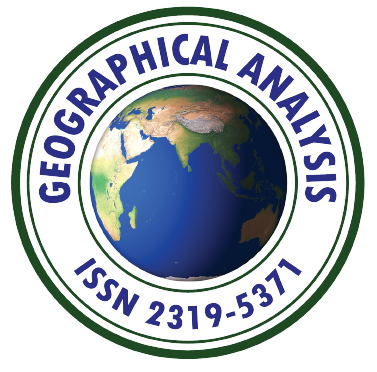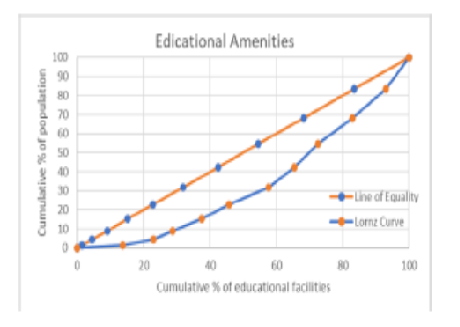
Geographical analysis
Department of Geography & GIS

Department of Geography & GIS

Geographical analysis
DOI: 10.53989/bu.ga.v14i1.24.205
Year: 2025, Volume: 14, Issue: 1, Pages: 30-41
Original Article
Nazim Nazir1∗, Uttam Namdeo Gadhe2
1Research scholar, Department of Geography, University of Mumbai, Kalina, Santacruz, Mumbai, 400098, Maharashtra, India
2Assistant professor/Head, Department of Geography, K.M.C College, Khopoli, Raigad, 410203, Maharashtra, India
*Corresponding Author
Email: [email protected]
Received Date:31 October 2024, Accepted Date:08 June 2025
Physical access to basic services and facilities inspires the quality of life and living environ of the community, as they are essential to interpret the standard of living individuals enjoy in a peculiar location. This study intends to investigate the spatial disparity and concentration of basic amenities in the Pulwama district of Jammu and Kashmir using GIS. Inequality in the study region is demonstrated in the form of uneven provision of social and economic amenities. Three basic facilities consisting of educational facilities, health care institutions (social amenities) and financial institutions (economic amenities) were analyzed and visualized, using Geographic information system (GIS) Technology. The study mainly relied on secondary sources of data. Two techniques namely the Z-score variate and Location Quotient have been employed to investigate the level of spatial clustering pattern in allocating selected amenities. However, the GINI coefficient along with the Lorenz curve technique has been utilized for accessing and computing the spatial disparity among the selected amenities. The results convey that imbalances exist in the provision of availability of selected amenities among different blocks in the district, as certain blocks are more advanced in terms of the accessibility of particular facilities while others fall well short of the average degree of development.
Keywords: Geographic Information System (GIS), Socio-economic amenities, Z-score variate, Location Quotient, GINI coefficient, Jammu and Kashmir
© 2025 Nazir & Gadhe. This is an open-access article distributed under the terms of the Creative Commons Attribution License, which permits unrestricted use, distribution, and reproduction in any medium, provided the original author and source are credited.
Published By Bangalore University, Bengaluru, Karnataka
Subscribe now for latest articles and news.